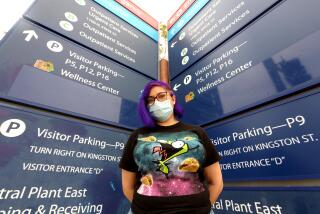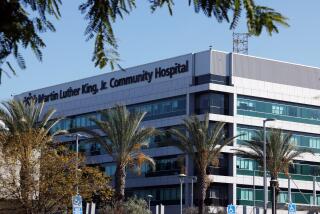Another healthcare crisis: Closing hospitals
- Share via
Lower Oconee Community Hospital in southern Georgia closed its doors this month, eliminating 25 hospital beds and up to 100 hospital jobs. This was the fourth Georgia hospital to fold in two years and the eighth rural hospital in the state to close since 2000. Although Lower Oconee’s shutdown may not have registered much media coverage, those in search of medical attention in Glenwood, Ga., should be mindful that the closest hospital is now 30 miles away. As reference, Santa Ana is 30 miles from Los Angeles. When faced with a medical emergency, no one fancies a long road trip.
Whether viewed as the fallout of modern healthcare’s transition from cost-based to performance-driven measures or simply as collateral damage from the effects of partisan politics, the growing trend of hospital closures in the United States has failed to command the attention it deserves. Across the nation, both rural and urban areas are struggling daily to maintain the necessary infrastructure to provide support for residents. The loss of even the smallest facility places additional strain on the already tenuous existence of neighboring institutions.
To make matters worse, access to prompt medical care is not the only thing compromised when a local hospital shuts down. In many instances, the neighborhood hospital, especially in rural areas, serves as the backbone of the community, providing employment around the clock, acting as an institution for community gatherings and, in some cases, offering the area’s only convenient restaurant and banking options.
The role of the American hospital has evolved, and only in the last century has it come to be regarded as the centerpiece of our nation’s healthcare delivery system. Before modern advances in technology and medical science, and before the influence of President Franklin D. Roosevelt’s New Deal, a hospital was considered a place where the poor and destitute could turn when there was neither friend nor family to provide care. By contrast, today’s medical facilities are the foundation of our healthcare system, where modern medicine and miracles intersect and high-quality care is readily accessible.
For then-Rep. Gabrielle Giffords of Arizona, that evolution in the role of hospitals may have saved her life. She was taken to and treated at the University Medical Center in Tucson less than an hour after suffering a gunshot wound to the head in January 2011. Had the congresswoman been speaking in a place like Glenwood, Ga., today, it is doubtful she would have survived the 30-mile transport to the nearest hospital.
Federal laws have created the functional equivalent of a constitutional right to emergency medical treatment at nearly every hospital across the country, extending even to those outside the protections granted by citizenship. Popular culture, too, has established the idea that only a hospital can properly address a medical emergency, because in matters of life and death, a hospital is symbolic of hope. No ambulance company or helicopter transport can fill that role in a town that has lost its hospital.
For healthcare reform to mature unimpeded, the debates surrounding the Affordable Care Act require concentrated, nonpartisan attention. And for reform to succeed, we also need hospitals to flourish, especially in places with few options.
Every hospital has a story to tell. Lower Oconee Community Hospital will not keep the nation’s attention for long, but its absence and that of other hospitals that close will certainly leave profound voids throughout their communities. Rather than ignore these continuing cracks in the foundation of our evolving healthcare system, there is much to be learned from these now-defunct facilities. We would do well to address the underlying problems behind the closures.
As any medical practitioner will tell you, it is wiser to treat the cause today than alleviate the symptoms tomorrow.
Craig B. Garner is a healthcare attorney and consultant, and an adjunct professor at the Pepperdine University School of Law, where he teaches courses on healthcare law.
More to Read
A cure for the common opinion
Get thought-provoking perspectives with our weekly newsletter.
You may occasionally receive promotional content from the Los Angeles Times.










